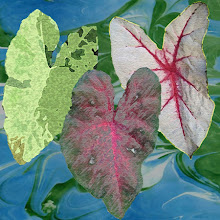I have come to view with a wary eye my dogged tracks as ones I've worn to ruts. These ruts seem as deep as some of the gullies I tried desperately to avoid steering the rental car into as we drove the waysides in Ireland. Getting accustomed to driving from the right side of the car on the left side of the mostly narrow roads was complicated further by trying to read the road signs and traffic postings. Now that I've had some time to reflect a bit on the signs, I have a new found appreciation for something I simply thought was curiously quaint when I first read it, and that was the idea of "Traffic Calming."
Imagine driving in a counter-intuitive manner on unfamiliar roads, very narrow roads often with hairpin turns or successive bends around blind curves, no shoulder but instead stone walls, gullies, or hedgerows that tickle the sides of the car as you try to stay within the confines of the white line marking the middle of the road (if there was one or grass growing through the macadam if there wasn't) and the dotted yellow lines marking the edge of the road (again, if they existed), while at the same time trying to maintain something close to the speed limit which was often an unimaginable 80 or 100km. Just as we'd get up to speed, there would appear on the road surface the word SLOW followed by several painted yellow lines across the road as a physical echo of the admonishment before the words EVEN SLOWER followed by more yellow refrains would bring us to a sign posting 30km and the words "Traffic Calming" as we entered a short stretch of brightly painted buildings indicating a village. Often, the traffic calming sign was followed by a series of ramps (better known to us as speed bumps) where pedestrians can cross with the right of way, which finally lead to at least one roundabout, oftentimes more, before the other edge of town was reached, and frazzled by that time, we'd read the sign for 100km and have to speed up again.
Once these signs and patterns for traffic calming became more familiar, I allowed myself to think about just what was intended by the road planners and how it was accomplished. Lane endings, traffic islands, mini-roundabouts, build-outs, chicanes and pinch points are all speed reducing measures that are put in place in myriad variations. They are intended as a way of slowing motor vehicles through road design to match the local conditions and to improve road safety. An added plus is that these measures also reduce things such as noise and air pollution in communities. It all makes sense, and it all happens here in the USA as well. What caught my fancy, however, was the Irish and UK sensibility to use the nomenclature of "Traffic Calming."
So, here is one of many "take-a-ways" from my trip: I need to institute traffic calming measures in my lifestyle. I need to slow down and then go slower. I need to stop and let some things go. In a roundabout, I can always circle as many times as I need to in order to make the right choice. If I get lost, there's always the option, as Fiona (our GPS system) often reminded me, to "make a U Turn when [I am] able." Even though we are now past the summer solstice, the days are still long, the summer is still young, and the new school year resumes at the end of the ample summer. Now is the time to reflect and imagine, to live in the calm, and to enjoy the fruits of summer living.











































